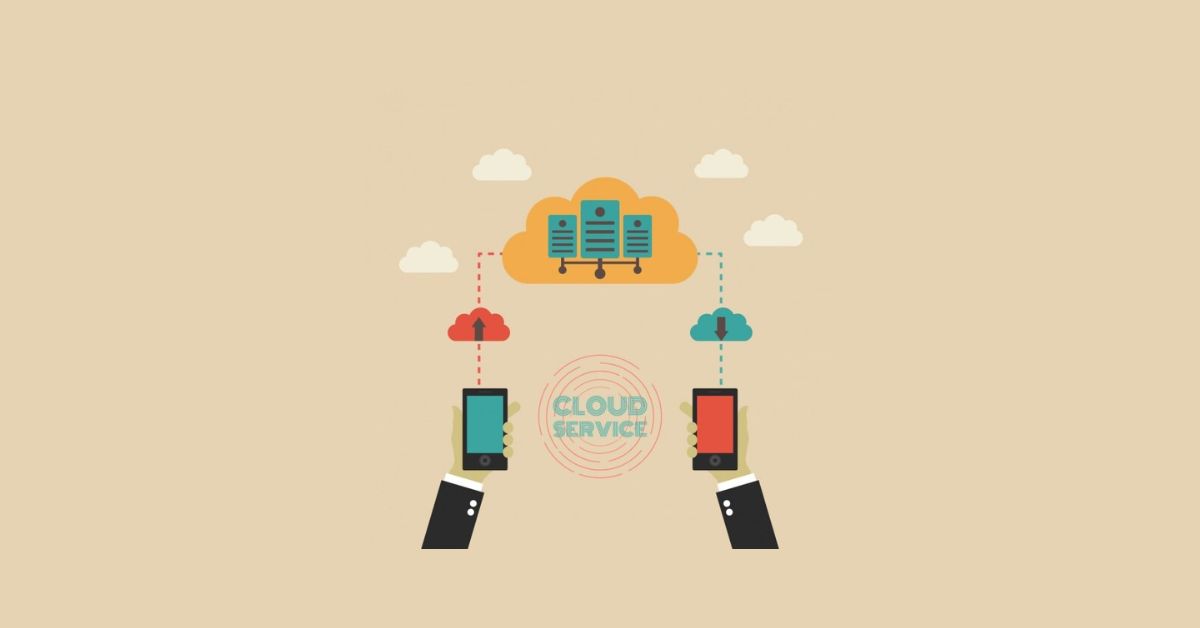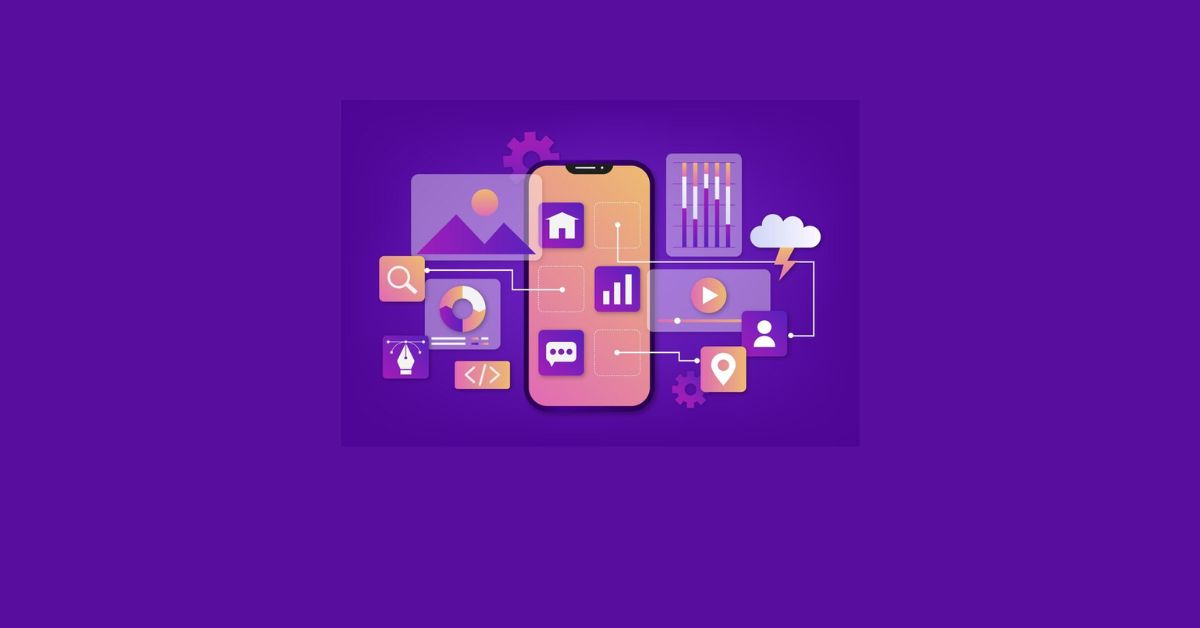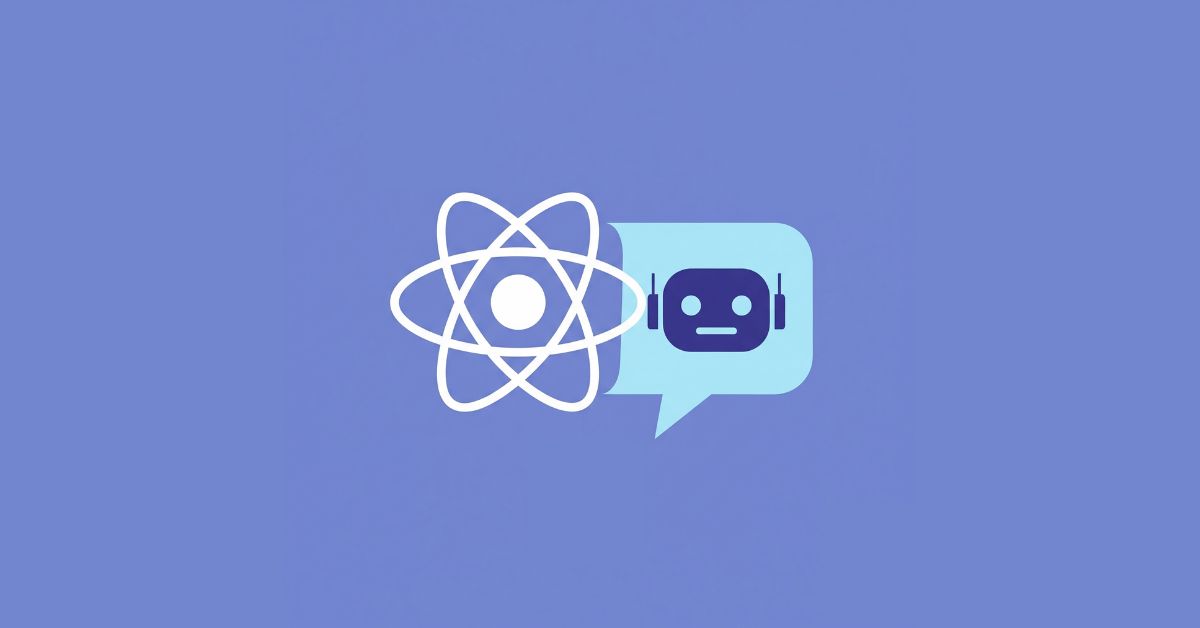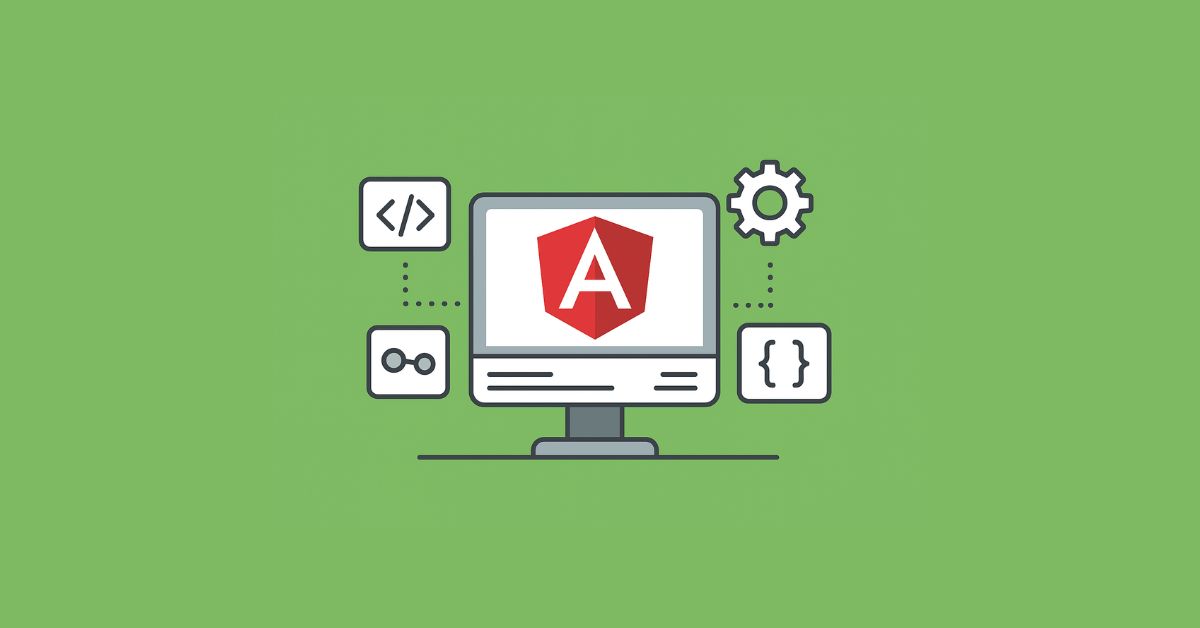Short Intro About Cloud Service Models
Cloud computing has completely changed the way businesses operate. Instead of relying on physical servers, complex software installations, and high upfront IT costs, companies now access computing resources, platforms, and applications through the internet.
This shift is made possible by cloud service models—different layers of cloud computing designed to meet specific business and technical needs. Whether you are a startup developing an app, an enterprise running large-scale operations, or a global company enabling remote collaboration, there is a cloud model tailored for you.
In this guide, we’ll explore the four major cloud service models—Infrastructure as a Service (IaaS), Platform as a Service (PaaS), and Software as a Service (SaaS). We’ll also look at emerging models, benefits, use cases, and how to decide which model best suits your business in 2025.
- What Are Cloud Service Models?
- The Three Main Types of Cloud Service Models
– Infrastructure as a Service (IaaS)
– Platform as a Service (PaaS)
– Software as a Service (SaaS) - How to Choose the Right Cloud Service Model
- Quick Comparison: IaaS vs. PaaS vs. SaaS
- Pros and Cons of Cloud Computing Service Models
- Emerging Cloud Models to Watch
- Last Words
- Frequently Asked Questions (FAQs)
What Are Cloud Service Models?
Cloud service models describe how computing resources, platforms, and software are delivered over the internet, and how responsibility is divided between the user and the provider. They define the levels of control, management, and abstraction in the cloud, allowing businesses to choose the model that best matches their technical expertise, budget, and scalability needs.
Understanding these cloud computing service models is essential for making informed decisions about digital transformation, cost optimization, and application deployment.
Cloud Service Model Definition and Purpose
At their core, service models in cloud computing simplify IT operations by reducing the need for heavy on-premises infrastructure. Instead of buying and maintaining physical servers, businesses can adopt cloud based service models that provide flexible, on-demand resources.
The main purpose of these models is to:
- Offer scalability without heavy upfront investment
- Ensure cost-effectiveness through pay-as-you-go pricing
- Provide different levels of control vs. convenience
- Accelerate innovation and time-to-market
By selecting the right model, companies can focus more on development, operations, or end-user productivity—depending on their needs.
Levels of Abstraction
The distinction between different types of cloud service models lies in how much of the underlying system you manage versus what is handled by the provider.
- At the lowest level (IaaS), you manage operating systems, apps, and middleware, while the provider takes care of the physical servers and virtualization.
- In the middle layer (PaaS), infrastructure and runtime environments are abstracted, letting you concentrate only on coding and deploying applications.
- At the highest level (SaaS), everything is managed by the provider, and you simply use the application through a browser or mobile device.
The Three Main Types of Cloud Service Models
- IaaS (Infrastructure as a Service): Provides virtualized computing resources such as servers, storage, and networks. It offers maximum flexibility and is best suited for businesses with strong IT expertise.
- PaaS (Platform as a Service): Supplies a pre-configured development environment, frameworks, and tools so developers can build and deploy applications without worrying about infrastructure.
- SaaS (Software as a Service): Delivers fully managed software applications over the internet on a subscription basis. End users only interact with the software while everything else is handled by the provider.
Infrastructure as a Service (IaaS)
Cloud computing service models are built on different layers of abstraction, and Infrastructure as a Service (IaaS) forms the foundation. It is one of the most widely used cloud service models, giving businesses access to essential IT infrastructure over the internet.
With IaaS, companies can eliminate the cost and complexity of maintaining on-premises hardware like servers, storage devices, and networking equipment. Instead, they rent these resources from a cloud provider and scale them up or down depending on their needs. This makes IaaS a flexible and cost-effective option compared to traditional IT setups.
What is IaaS in Cloud Computing?
IaaS is a cloud computing service model that provides virtualized infrastructure resources—such as compute power, storage, and networking—through the internet.
Rather than investing in physical data centers, organizations can simply provision virtual machines (VMs), scalable storage, and networking capabilities as and when required. This flexibility allows businesses to focus on building applications and services, while the provider handles the physical hardware and underlying infrastructure.
Key Features of IaaS
Some of the defining features of the IaaS cloud model include:
- On-demand infrastructure – Provision servers, storage, and networking resources instantly without buying hardware.
- Scalability – Scale resources up or down to match fluctuating workloads.
- Pay-as-you-go pricing – Only pay for the resources you use, lowering capital expenditure.
- High availability – IaaS providers ensure redundancy and uptime through distributed data centers.
- Customization – Businesses retain control over operating systems, middleware, and applications.
Common Use Cases of IaaS
IaaS supports a wide range of cloud computing services. Some of the most common use cases are:
- Hosting websites and applications – IaaS provides the compute and networking power to host apps that can handle millions of users.
- Disaster recovery & backup – Businesses use IaaS for data storage and redundancy without the cost of building backup facilities.
- Test and development environments – Developers can quickly set up VMs and environments for testing applications before deployment.
- Big data analytics – Enterprises leverage IaaS to process large data sets efficiently using scalable compute power.
Popular IaaS Providers
Some of the top cloud service providers offering IaaS include:
- Amazon Web Services (AWS) EC2 – Highly scalable virtual compute resources with a global infrastructure.
- Google Compute Engine (GCE) – Google Cloud service offering VMs, networking, and storage for enterprises.
- Microsoft Azure Virtual Machines – A flexible cloud service that allows businesses to run workloads on demand.
Platform as a Service (PaaS)
While Infrastructure as a Service (IaaS) gives businesses raw infrastructure, Platform as a Service (PaaS) goes one step further. It provides a complete cloud-based platform that allows developers to build, test, and deploy applications without the complexity of managing servers, operating systems, or storage.
By using PaaS, organizations can speed up their application development lifecycle and focus entirely on coding and business logic, while the cloud provider manages infrastructure, middleware, and runtime environments.
Understanding PaaS in Cloud Computing Models
PaaS is one of the core cloud computing service models. It provides a ready-to-use environment that includes development tools, APIs, databases, and frameworks, allowing developers to innovate without worrying about system-level management.
This cloud service model is particularly popular among startups and development teams because it removes the need for costly hardware investments and speeds up time-to-market.
In short, with PaaS, you only bring your code and ideas—the provider supplies everything else needed to run your applications.
Main Features of PaaS
Some of the key characteristics of the PaaS cloud model include:
- Infrastructure abstraction – The cloud provider handles servers, networking, and storage so developers only manage applications.
- Built-in scalability – Applications can automatically scale to meet growing demand without downtime.
- Integrated development tools – PaaS solutions often include IDEs, APIs, CI/CD pipelines, and database management systems.
- Multi-language support – Developers can code in popular languages like Java, Python, PHP, Node.js, or Go.
- Collaboration-friendly – Teams can work on the same project from different locations with real-time synchronization.
Use Cases of PaaS in Cloud Computing Services
PaaS is widely used across industries to accelerate digital transformation. Some common scenarios include:
- Web and mobile app development – Build, test, and launch applications quickly without investing in infrastructure.
- API creation and management – Develop, deploy, and secure APIs that connect different business systems.
- Microservices architecture – Break down applications into smaller, scalable services for better performance and flexibility.
- Data analytics and business intelligence – Run analytics workflows and connect data pipelines directly in the cloud.
Well-Known PaaS Providers
Some of the leading providers of this service model of cloud computing include:
- Heroku – A popular PaaS platform that simplifies building, deploying, and scaling modern applications.
- Google App Engine – Google’s fully managed PaaS that supports multiple programming languages and automatic scaling.
- AWS Elastic Beanstalk – Amazon’s PaaS offering that lets developers deploy applications without managing servers.
- Microsoft Azure App Service – A PaaS solution for hosting web apps, REST APIs, and mobile backends.
Software as a Service (SaaS)
Among the different cloud computing service models, Software as a Service (SaaS) is the one most people interact with daily—often without even realizing it. From email services like Gmail to collaboration tools such as Slack or Microsoft Teams, SaaS has become the standard for delivering software over the internet.
With SaaS, businesses and individuals no longer need to purchase, install, or maintain applications on local computers or servers. Instead, they can simply log in via a browser and access fully functional software hosted in the cloud. This cloud service model is especially attractive because the provider manages everything—including infrastructure, updates, and security—while users focus only on using the application.
What is SaaS in Cloud Computing?
SaaS is a cloud based service model where applications are centrally hosted and made available to customers on demand. Unlike traditional software that requires installation and manual updates, SaaS solutions are delivered entirely through the web.
Businesses often choose SaaS because it is cost-effective, easy to adopt, and scalable. Whether it’s productivity tools, customer management platforms, or data analytics dashboards, SaaS enables organizations to access powerful software without worrying about hardware or IT overhead.
Core Features of SaaS Applications
Some of the defining characteristics of this type of cloud service model include:
- Vendor-managed operations – The provider handles updates, security patches, performance monitoring, and maintenance.
- Subscription or pay-per-use pricing – SaaS is typically billed monthly or annually, lowering upfront software costs.
- Browser-based access – Applications run directly in a web browser, eliminating the need for installation.
- Seamless updates – Users always have access to the latest version of the software without downtime.
- Device independence – SaaS apps can be accessed from desktops, tablets, or mobile devices with internet connectivity.
When to Use SaaS
SaaS is widely adopted across industries and is a practical option for businesses of all sizes. Common use cases include:
- Email and communication – Services like Gmail, Outlook, and Microsoft Teams enable easy communication and collaboration.
- Customer Relationship Management (CRM) – Platforms such as Salesforce or Zoho CRM help businesses track customer interactions, sales pipelines, and marketing campaigns.
- Project and task management – SaaS tools like Trello, Asana, and Monday.com are popular for team productivity and project tracking.
- Data storage and sharing – Dropbox and Google Drive provide cloud-based file storage and collaboration features.
- Business intelligence & analytics – Tools like Tableau Online deliver powerful insights without requiring local installations.
Well-Known SaaS Providers
Some of the leading examples of this cloud computing model are:
- Salesforce – A market leader in CRM software that helps businesses manage sales and customer relationships.
- Google Workspace – A suite of cloud productivity tools including Docs, Sheets, Gmail, and Drive.
- Microsoft 365 – Microsoft’s SaaS platform for word processing, spreadsheets, email, and team collaboration.
- Slack – A widely used SaaS communication platform for team messaging and integration with other cloud tools.
How to Choose the Right Cloud Service Model
With so many cloud computing service models available, selecting the right one for your business is not just about technology—it’s about aligning with your goals, budget, and level of technical expertise. Each model—IaaS, PaaS, and SaaS—offers unique benefits, but also comes with trade-offs in terms of control, flexibility, and cost.
Making the right decision can determine how efficiently your business leverages cloud computing models to scale, innovate, and compete in today’s digital economy.
Key Factors to Consider
When evaluating different service models in cloud computing, keep the following factors in mind:
- Level of control required – Do you need deep control over operating systems and environments (IaaS), or do you prefer a hands-off, managed solution.
- Technical expertise of your team – Highly skilled IT teams may benefit from IaaS, while smaller teams with limited resources may find SaaS or PaaS more practical.
- Project scale and complexity – Large enterprise workloads or custom apps may require IaaS/PaaS, whereas smaller teams may rely on SaaS applications.
- Budget and cost structure – Subscription-based SaaS offers predictable expenses, while IaaS provides flexibility but may involve higher management costs.
- Customization needs – If your project demands unique configurations, IaaS and PaaS offer more freedom, whereas SaaS prioritizes ease of use over customization.
How the Models Compare
- IaaS (Infrastructure as a Service) – Offers maximum flexibility and scalability. Ideal for organizations that need full control over infrastructure but have the technical expertise to manage it.
- PaaS (Platform as a Service) – Balances control and convenience by managing infrastructure for you, while giving developers tools to build and deploy apps quickly.
- SaaS (Software as a Service) – The most user-friendly model, where everything is managed by the provider. Perfect for businesses that want ready-to-use applications without the complexity of setup or maintenance.
Why Choosing the Right Model Matters
Selecting the wrong cloud computing service model can result in:
- Overspending on infrastructure you don’t fully use
- Security or compliance challenges if the model doesn’t fit your industry
- Productivity issues if tools don’t match your team’s capabilities
- Limited scalability if your chosen model can’t grow with your business
On the other hand, the right cloud service model helps you:
- Optimize IT costs with predictable pricing
- Improve collaboration and productivity
- Scale resources as your business grows
- Stay competitive with modern, cloud-based tools
Quick Comparison: IaaS vs. PaaS vs. SaaS
| Service Model | What You Manage | What Provider Manages | Best For | Examples |
|---|---|---|---|---|
| IaaS (Infrastructure) | OS, apps, data | Servers, storage, networking | Enterprises needing scalability & control | AWS EC2, Microsoft Azure, Google Cloud Compute |
| PaaS (Platform) | Applications, code | OS, middleware, infra | Developers building apps quickly | Heroku, Google App Engine, Azure App Service |
| SaaS (Software) | Nothing—just usage | Entire stack | Businesses needing ready-made apps | Salesforce, Google Workspace, Dropbox |
Pros and Cons of Cloud Computing Service Models
Every cloud service model—IaaS, PaaS, SaaS—comes with its own strengths and limitations. Choosing the right one depends on your business size, technical expertise, and long-term goals. Below, we break down the advantages and disadvantages of each to help you make a better decision.
Infrastructure as a Service (IaaS)
IaaS is the most flexible among the cloud computing models, offering virtualized infrastructure such as servers, networking, and storage. It’s designed for organizations that want full control over their environment without the burden of managing physical hardware.
Pros
- Maximum control over operating systems, storage, and networking
- High scalability with on-demand resource allocation
- Pay-as-you-go pricing eliminates large upfront hardware investments
- Ideal for building customized and complex IT ecosystems
Cons
- Requires advanced skills in cloud security, networking, and administration
- Infrastructure management can be time-intensive
- If not optimized, costs can escalate quickly
Best fit for: Large enterprises, IT-intensive businesses, and companies needing tailored environments.
Platform as a Service (PaaS)
PaaS abstracts infrastructure and provides a ready-made platform for application development. It offers pre-configured environments, frameworks, and automation to help developers build and deploy applications faster.
Pros
- Accelerated development cycles with pre-built tools and APIs
- Automatic scaling ensures applications handle fluctuating demand
- Removes the complexity of server and infrastructure management
- Encourages collaboration among distributed development teams
Cons
- Limited flexibility compared to IaaS
- Potential vendor lock-in may make migration costly
- Not every programming language or framework is supported
Best fit for: Startups, agile teams, and businesses focused on rapid cloud-native app development.
Software as a Service (SaaS)
SaaS is the simplest service model of cloud computing, delivering fully managed software applications via the internet. From productivity tools to CRM platforms, SaaS makes applications accessible anywhere, anytime.
Pros
- No installation, configuration, or maintenance required
- Accessible on any device with an internet connection
- Cost-effective subscription pricing with predictable billing
- Regular automatic updates for performance and security
Cons
- Limited customization and dependency on vendor roadmap
- Data security concerns as sensitive information resides with the provider
- May face integration challenges with existing enterprise systems
Best fit for: Small to mid-sized businesses, non-technical teams, and organizations seeking fully managed, ready-to-use software.
Emerging Cloud Models to Watch
In addition to the big four, new models are gaining traction:
- FaaS (Function as a Service) – Also known as serverless computing, it allows businesses to run code in response to events without managing servers (e.g., AWS Lambda).
- BaaS (Backend as a Service) – Provides backend functionality (databases, authentication, push notifications) for mobile and web apps.
These newer models reflect the growing demand for simplification and automation in cloud services.
Last Words
Cloud service models give businesses the freedom to innovate, scale, and reduce IT complexity. Whether you need infrastructure control (IaaS), developer-ready platforms (PaaS), or ready-to-use software (SaaS), there is a cloud model that fits your needs.
At GrapesTech Solutions, we help organizations evaluate and implement the right cloud solutions for their digital transformation journey.
Need help now?
Looking to adopt the right cloud model for your business? Get in touch with our cloud service experts today.
Frequently Asked Questions (FAQs)
The three main cloud computing service models are:
- IaaS (Infrastructure as a Service): Virtual servers, storage, and networking.
- PaaS (Platform as a Service): A development environment with tools and frameworks.
- SaaS (Software as a Service): Ready-to-use applications delivered online.
Leaders see faster decisions, lower operating costs, better customer experiences, stronger compliance, and a scalable foundation for growth.
PaaS is best for rapid app development with built-in tools, while IaaS is better if you need custom infrastructure setups.
- No installation or maintenance required
- Accessible from any device with internet
- Subscription pricing lowers the upfront cost
- Automatic updates and security included
IaaS is ideal when businesses need custom IT environments, have skilled IT teams, or run large-scale workloads requiring infrastructure control.
Yes. Many organizations combine models—for example, using IaaS for infrastructure, PaaS for app development, and SaaS for business productivity tools.
- IaaS: Pay for compute, storage, and bandwidth usage
- PaaS: Pay for platform and developer tools
- SaaS: Pay per user or subscription for software access
- IaaS: Requires IT expertise; costs can rise if not optimized
- PaaS: Limited flexibility, vendor lock-in risk
- SaaS: Less customization, data security depends on the provider
Yes. Startups benefit from low setup costs and faster development, while large enterprises use PaaS to streamline app deployment and collaboration across teams.
- IaaS: AWS EC2, Microsoft Azure VMs, Google Compute Engine
- PaaS: AWS Elastic Beanstalk, Google App Engine, Heroku
- SaaS: Salesforce, Google Workspace, Microsoft 365








